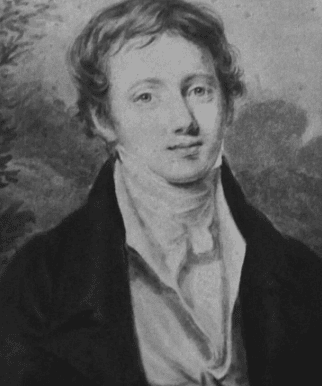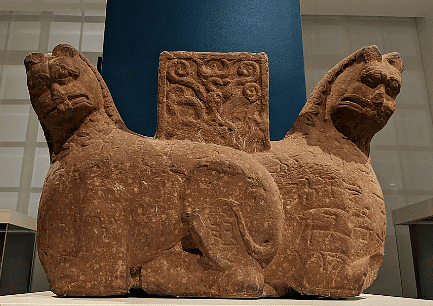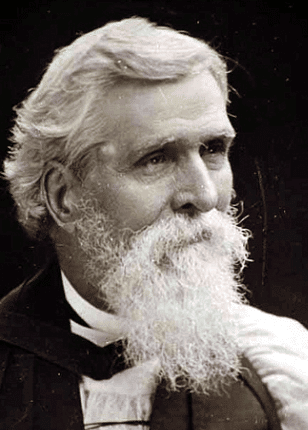UPSC Exam > UPSC Notes > History for UPSC CSE > Nitin Singhania Summary: Coins in Ancient and Medieval India- 2
Nitin Singhania Summary: Coins in Ancient and Medieval India- 2 | History for UPSC CSE PDF Download
Important Contributors to Numismatics in Ancient and Medieval India
Sir William Jones (1746-1794)
- Established the Asiatic Society of Bengal in 1784, initiating advancements in the study of Numismatics.
- Launched the society's journal, the Asiatick Researches, fostering scholarly contributions.
James Prinsep (1799-1840)
- Distinguished scholar, orientalist, and mintist who significantly contributed to deciphering the Kharoshthi script.
- Utilized bilingual Indo-Greek coins, interpreting various Indian series coins, Bactrian and Kushan coins, and those from the Gupta period.
- Contributed to identifying Roman coins in India, reporting on specimens in the Calcutta Museum (1832), aiding the understanding of Indo-Roman trade patterns.
 James Prinsep
James Prinsep
William Marsden (1754-1836)
- Renowned numismatist whose work "Numismata Orientalia" (1823-1825) made substantial contributions to Asian Numismatics.
- The second volume featured a comprehensive section on Coins of Hindustan.
E. J. Rapson (1861-1937)
- Notable British numismatist, known for comprehensive serials covering Indian Coins and cataloging coins of the Andra Dynasty, Western Ksatrapas, Trailtaka Dynasty, and Bodhi Dynasty.
 Mathura lion capital
Mathura lion capital
Pandit Bhagvanlal Indraji (1839-1888)
- Indian archaeologist, epigrapher, and numismatist with a significant collection of Indo-Parthian, Kashan, Sasanian, and Gupta coins.
- Accomplished tasks such as making transcripts of the Hathigampla inscription and discovering artifacts like the Mathura lion capital, Naneghat reliefs, Barat and Sogs Ashakan inscription, etc.
The Numismatic Society of India (NSI)
- Established in 1910, marking a pivotal moment in Indian Numismatics.
- Founding members, including Rev. Sir Richard Burn, H. Wright, and R. B. Whitehead, laid the foundation for the society.
- Sir John Stanley, the first President and Chief Justice of the Allahabad High Court, played a key role in its inception.
Roman Coins in Ancient India
A significant number of Roman coins, spanning from the 1st century BCE to the 6th century CE, have been discovered across India, with notable hoards in the Krishna Valley (Andhra Pradesh), Coimbatore, Arikamedu (Tamil Nadu), and Muziris (Kerala).
Numismatists James Prinsep, Alexander Cunningham, and E. J. Rapson contributed to identifying these coins and unraveling patterns of ancient Indo-Roman trade.
 Bishop Robert Caldwell
Bishop Robert Caldwell
The influx of Roman coins and bullions into India unfolded in three distinct phases:
Initial Phase
- Marked by a substantial influx of silver coins, particularly the Silver Denarii of ancient Rome, functioning essentially as bullion.
- These coins, with weights ranging from 3.4 to 4 grams, were predominantly discovered in Kerala, Tamil Nadu, and the Lakshadweep Islands.
Second Phase (Gold Phase)
- Characterized by the introduction of gold coins or Aureus, weighing between 7 to 8 grams.
- Issued primarily by notable figures like Augustus, Tiberius, Claudius, and Nero.
- Major Roman Gold coins were identified in various regions, including Kerala, Karnataka, Tamil Nadu, and Andhra Pradesh. Minor Roman Gold coins were also uncovered in Gujarat, Maharashtra, and Odisha. Late gold coins from the 2nd to 3rd century CE were attributed to Antonius Pius and Septimius Severus.
 Lakshadweep Islands
Lakshadweep Islands
Third Phase
- Late Roman copper coins, referred to as Folles, were discovered in significant numbers in Karur and Madurai in Tamil Nadu.
- Coins issued in the 4th century CE were attributed to the rulers Constantius II and Theodosius.
- Remarkably, Roman coins continued to be found in South India up to the 6th century CE.
In addition to these phases, some noteworthy features and observations include:
- Roman coins were utilized as models for minting coins by contemporary Indian rulers, resulting in the discovery of numerous Roman coin imitations at various sites.
- A distinctive slash mark is a common characteristic of most Roman coins found in India.
- The text "Periplus Maris Erythraei" identified three key regions—Barbarikon, Barygaza, and Muziris—as primary providers of the market for Romans.
- Roman clay bullae, dating back to the 4th-3rd century BCE to 200 CE, have been discovered widely across the Deccan and northern India, indicating a significant historical context.
The document Nitin Singhania Summary: Coins in Ancient and Medieval India- 2 | History for UPSC CSE is a part of the UPSC Course History for UPSC CSE.
All you need of UPSC at this link: UPSC
|
210 videos|853 docs|219 tests
|
FAQs on Nitin Singhania Summary: Coins in Ancient and Medieval India- 2 - History for UPSC CSE
| 1. What were the key features of coins used in ancient and medieval India? |  |
Ans. Coins in ancient and medieval India were characterized by their diverse materials, such as gold, silver, copper, and bronze. They often featured intricate designs, including symbols, deities, and inscriptions in various scripts. The weight and size of coins varied, and they were commonly used for trade, taxation, and as a medium of exchange.
| 2. How did Roman coins influence the coinage system in ancient India? |  |
Ans. Roman coins significantly influenced the Indian coinage system through trade and cultural exchanges. The introduction of Roman coins led to the adoption of certain styles and motifs in Indian coinage. Additionally, the presence of Roman merchants in India facilitated the circulation of these coins, which helped establish a more standardized currency system.
| 3. Who were the important contributors to numismatics in ancient and medieval India? |  |
Ans. Key contributors to numismatics in ancient and medieval India include rulers like Chandragupta Maurya and his successors, who introduced systematic coinage. The Gupta Empire also made notable contributions, as did the Indo-Greek rulers who brought Hellenistic influences. Scholars and collectors in later periods, such as during the Mughal Empire, played a significant role in studying and preserving coins.
| 4. What role did coins play in the economy of ancient and medieval India? |  |
Ans. Coins were crucial to the economy of ancient and medieval India as they facilitated trade and commerce. They served as a standard medium of exchange, enabling transactions between merchants and consumers. Coins also played a role in the taxation system, allowing rulers to collect revenue more efficiently and support their administrations.
| 5. What types of inscriptions and symbols were commonly found on ancient Indian coins? |  |
Ans. Ancient Indian coins often featured inscriptions in various scripts, including Brahmi and Kharosthi. Common symbols included images of deities, animals, and royal emblems that represented the issuing authority. These inscriptions and symbols provided insights into the political, religious, and cultural context of the time, making them valuable for historical research.
Related Searches





















